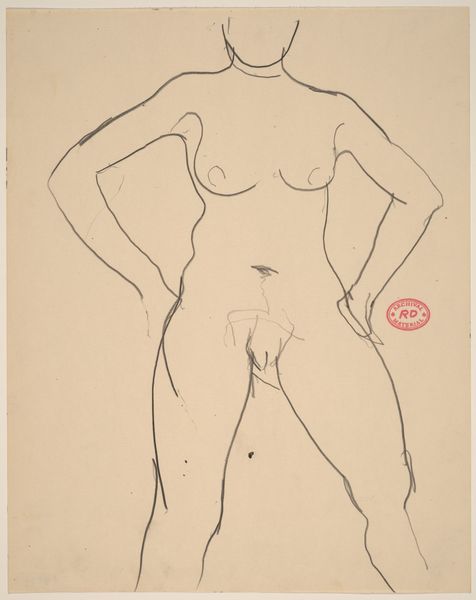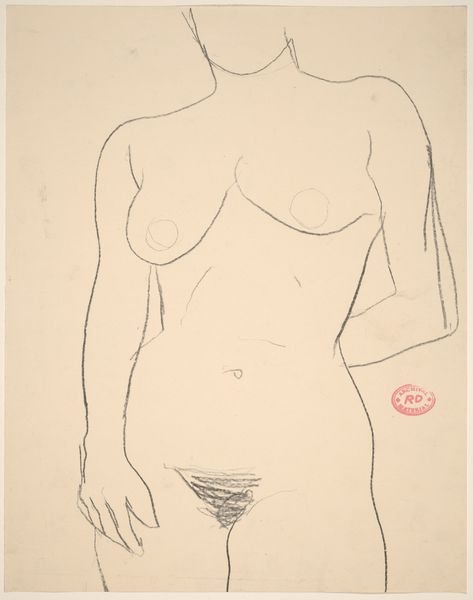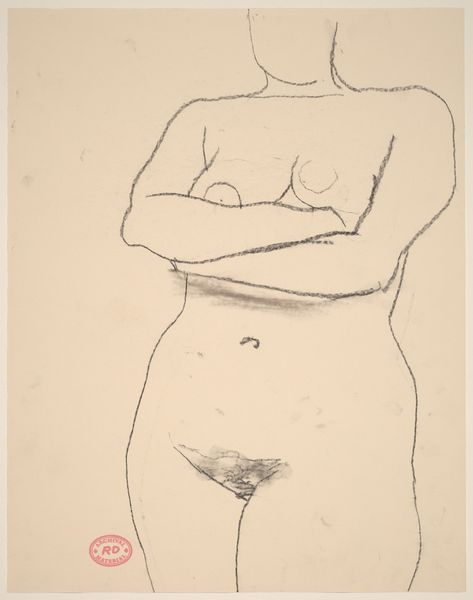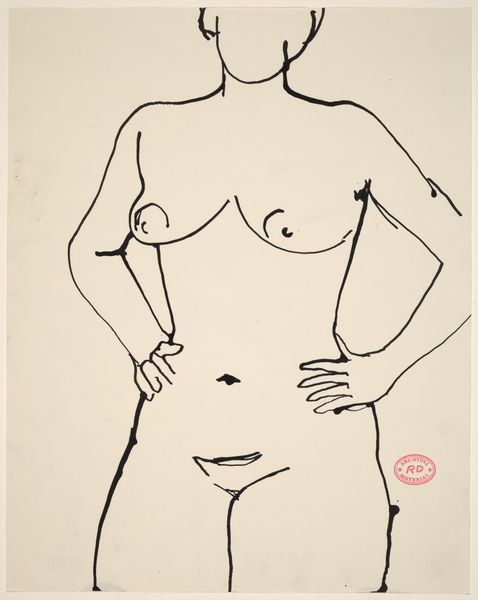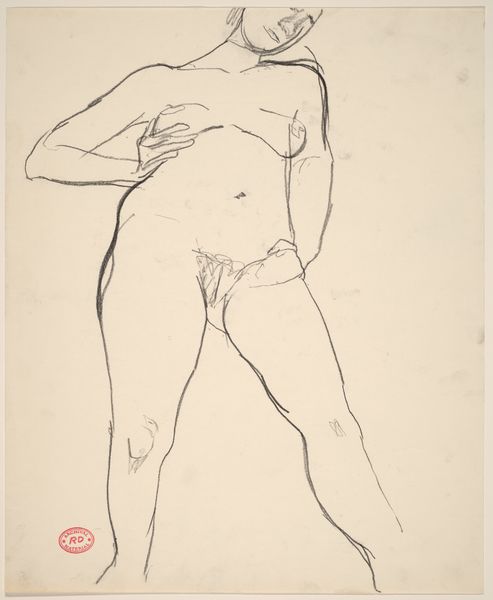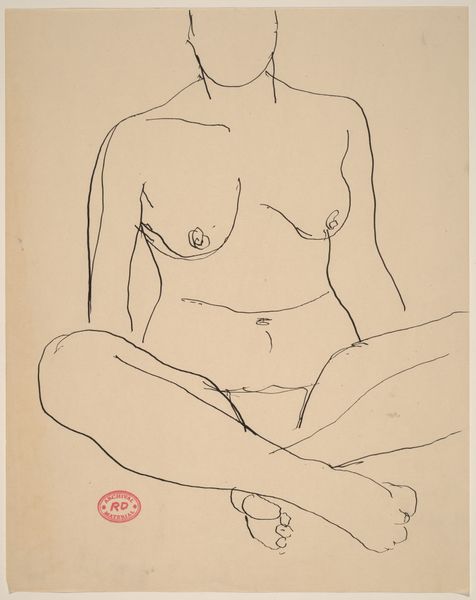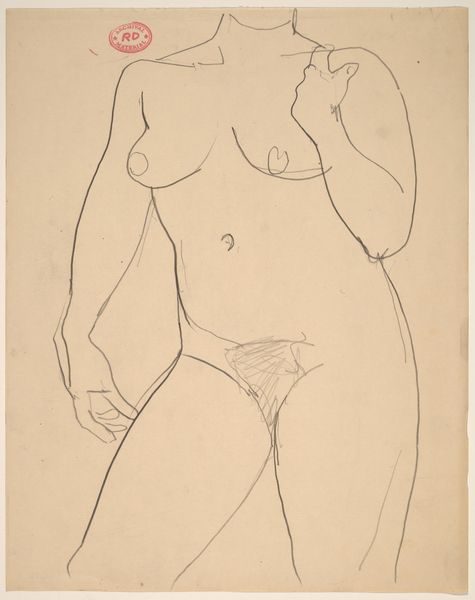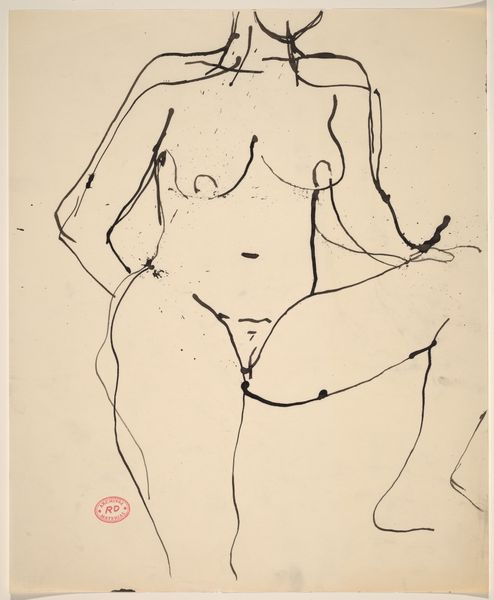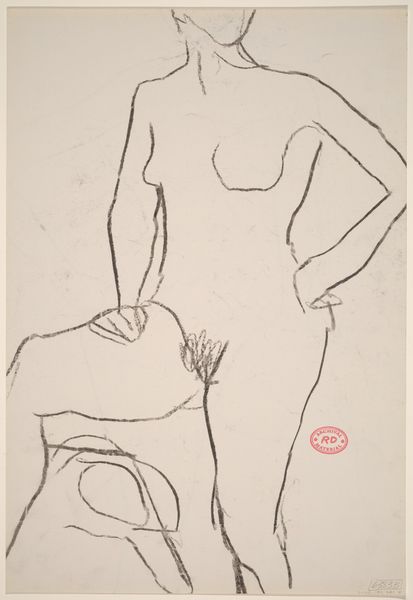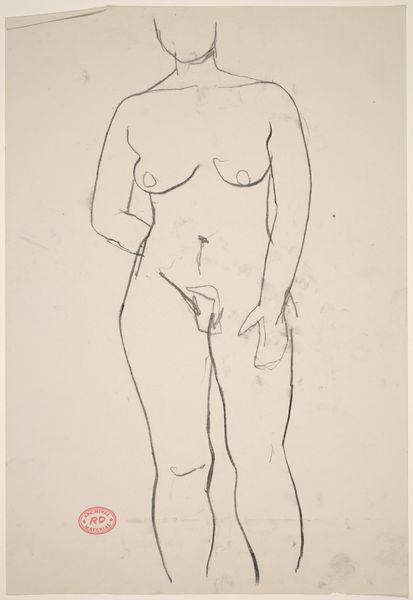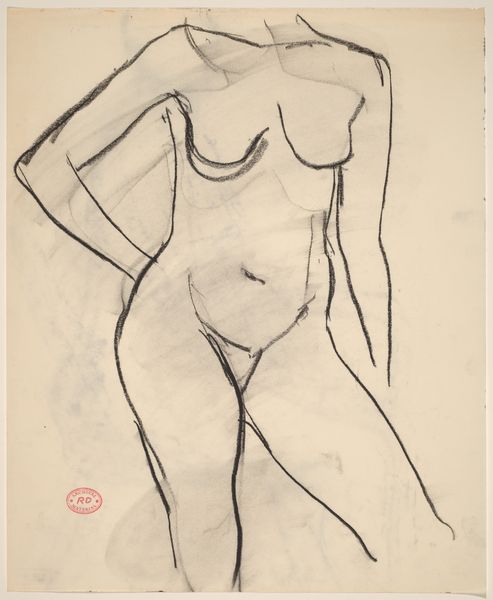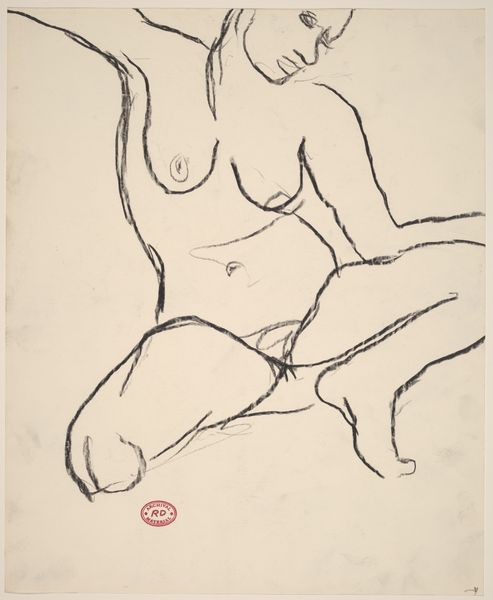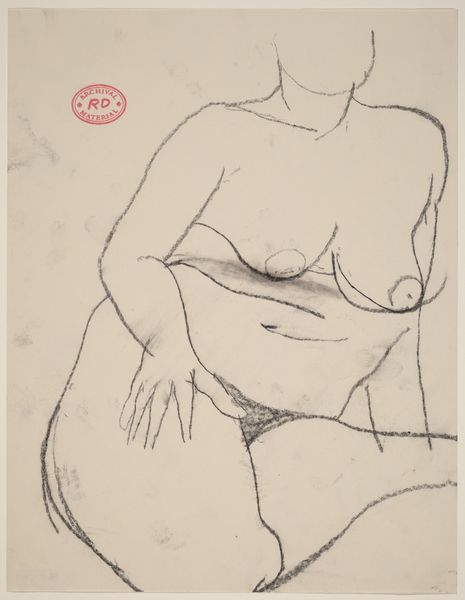![Untitled [standing nude with her arms crossed] by Richard Diebenkorn](/_next/image?url=https%3A%2F%2Fd2w8kbdekdi1gv.cloudfront.net%2FeyJidWNrZXQiOiAiYXJ0ZXJhLWltYWdlcy1idWNrZXQiLCAia2V5IjogImFydHdvcmtzLzkxYzUyZjdiLTE4NjItNGMzOC05MDgyLTA0NzY0ZmE3M2E4NS85MWM1MmY3Yi0xODYyLTRjMzgtOTA4Mi0wNDc2NGZhNzNhODVfZnVsbC5qcGciLCAiZWRpdHMiOiB7InJlc2l6ZSI6IHsid2lkdGgiOiAxOTIwLCAiaGVpZ2h0IjogMTkyMCwgImZpdCI6ICJpbnNpZGUifX19&w=3840&q=75)
Untitled [standing nude with her arms crossed] 1955 - 1967
0:00
0:00
drawing, dry-media, pencil
#
portrait
#
drawing
#
figuration
#
dry-media
#
bay-area-figurative-movement
#
pencil
#
nude
Dimensions: overall: 38.7 x 27.9 cm (15 1/4 x 11 in.)
Copyright: National Gallery of Art: CC0 1.0
Curator: The first thing I notice is the directness of the gaze – or, rather, the absence of one. It's haunting in its own way. Editor: Indeed. Let's provide some context. This is an untitled drawing by Richard Diebenkorn, made sometime between 1955 and 1967. We see a standing nude figure, arms crossed. It's rendered simply in pencil on paper, quite spare. Curator: Spare is a good word. The lack of facial detail amplifies the feeling. Arms crossed, no face... Is it defiance, discomfort, erasure? So much psychology is hinted at. The line work around the pelvis area looks very deliberate too, wouldn't you say? Editor: Absolutely. These figural studies were part of Diebenkorn’s broader investigation into form and space, something he took from observing many post-war artists at the time. His move toward abstraction wasn't a rejection of the figure but an attempt to distill its essence. This pencil drawing reflects a period when the figure in art became associated with individual experiences as artists worked against what some considered established narratives in favor of reflecting their lives, sometimes marked with hardship. Curator: It reflects so many archetypal images of women across time: protective mother, veiled seductress. Without the specifics of facial expression, those symbols rise to the surface all the more. The line becomes both powerful and vulnerable here. Editor: Precisely. And the artistic and cultural contexts during the middle of the twentieth century deeply changed not only how images of nudes could be understood and celebrated or attacked depending on whose gaze or whose experiences were on display. Artists walked a tightrope trying to display universality, individual experience, and be accepted by increasingly partisan views about body, gender and race. The intimacy of the pencil sketch only sharpens this sense. Curator: For me, its enduring appeal lies in how it balances immediacy and distance. We are present, confronting a figure both anonymous and deeply personal. The drawing invites not observation, but almost... empathy? Editor: An excellent point. It’s an artwork that resonates across different audiences because of the many possible ways to relate to its form and context.
Comments
No comments
Be the first to comment and join the conversation on the ultimate creative platform.
